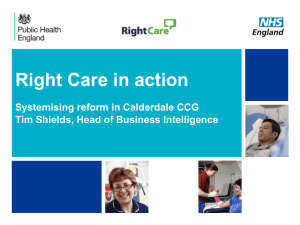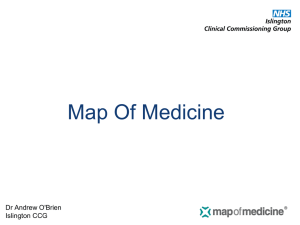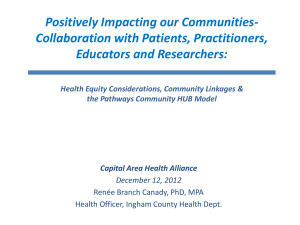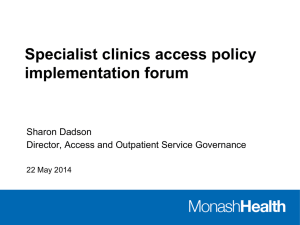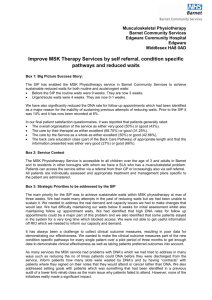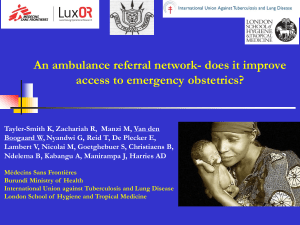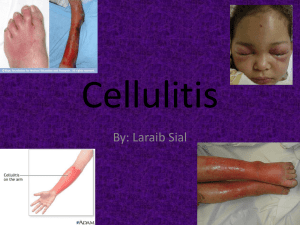London Ambulance Service: Appropriate care pathways.
advertisement
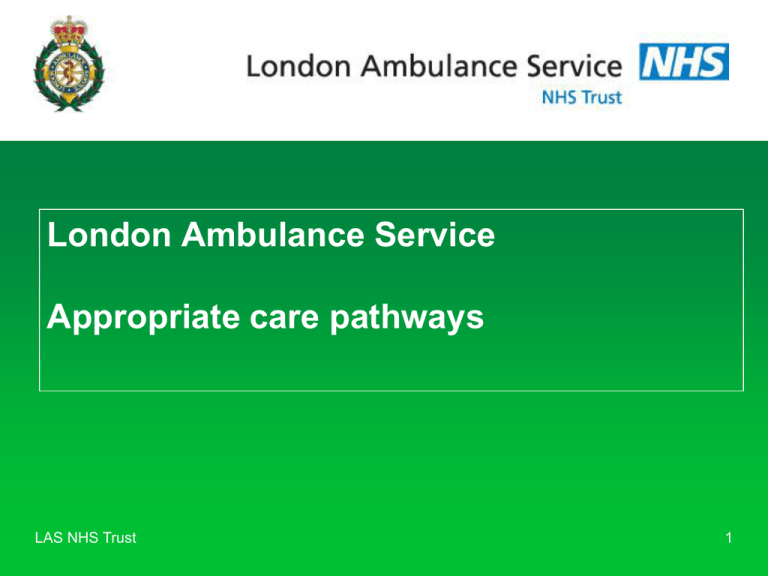
London Ambulance Service Appropriate care pathways LAS NHS Trust 1 Major trauma 2 London Ambulance Service NHS Trust Stroke 3 London Ambulance Service NHS Trust Cardiac Care • Heart attack centres • High Risk Acute Coronary Syndrome • Emergency arrhythmia centres 4 GP / Referral Support Team Elderly Faller referrals • Crews are asked not to regard emergency departments as the best destination for all patients. • Consideration is given to whether the best management of the patient could be in the community (GP/district nurse/palliative care team) or at a minor injuries unit or urgent care centre. • Crews refer non-conveyed falls patients over the age of 65 to their GP; either directly or to the referral support team 5 LAS Falls Decision Tree 6 ‘Top 10’ lists for Minor Injury Units / Urgent Care Centres & Walk-In Centres Minor Injury Units (MIUs) Walk-in Centres (WiCs) Ankle injury – no deformity; able to weight bear with assistance of one person. Wrist injury – no gross deformity; good distal perfusion. Minor head injury – no history of loss of consciousness, GCS 15/15; no intoxicating substances; no facial injury and no current anti-coagulant therapy. Elbow injury – must be non-displaced and have good distal pulse. Burns & scalds – less than 3%in adults, less than 1% in paediatrics; no facial burns; no inhalation injury. Bites & stings – no human bites, no systemic reaction. Wounds & lacerations – minor injuries only; scalp and facial wounds, excluding the hands, feet & triangle of the face. Rib injury – if no primary survey problems, must be due to trauma/injury not non-traumatic presentation. Digit injury – no open injuries; no infection; no diabetic problems; discussion with clinician is highly recommended prior to transfer. Eye conditions – no penetrating injury; no peri-orbital cellulitis. Upper respiratory tract infection – uncomplicated infections; version 8 of the flu algorithm should be used to assess these patients. Skin complaints (incl. rashes) – incl. impetigo, minor cellulitis & wound infections; patient must be apyrexial, no nonblanching rashes. Minor allergic reactions Earache Bites & stings – no human bites, no systemic reaction. Lower back pain – no ‘red flags.’ Vomiting – if less than 4hrs. Urinary tract infection – uncomplicated infections in females aged 16yrs and over only. Sore throat – patient must be able to swallow; no drooling; no indications of quinsy; no trismus. Eye conditions – no penetrating injury; no peri-orbital cellulitis. Note: •An Urgent Care Centre (UCCs) will be able to manage any patient presenting with any one of the above conditions (both lists). •Any queries should be addressed to the Clinical Support Desk (CSD) – this includes any feedback or issues arising from conveying a patient with an appropriate condition to a MIU/UCC/WIC. 7 Appropriate Care Pathways • The personal issue Enhanced PreHospital Practice booklet [issued 2012/13] describes the appropriate referral pathways for a range of different patient groups 8 Appropriate Care Pathways • The personal issue Alcohol and Diabetes Aide for Operational Staff [issued 2012/13] describes the appropriate referral pathways for these specific patient groups 9 Appropriate Care Pathways; example Diabetes • Hypoglycaemia • If after patient-staff discussion the final outcome is for non-conveyance, we ensure the patient has recovered and that they are well enough and safe to be left at home • We then request consent for the service to call the patient back within 2 hours; we explain that a referral will be made to the patient’s own GP to support the patient’s on-going welfare 10 Appropriate Care Pathways; example Diabetes • Hyperglycaemia • We continue to measure blood glucose levels for all patients over 40 years of age regardless of their presenting complaint • If the reading is significantly raised (13Mmol/L to 25Mmol/L) and the patient declines conveyance we contact the Referral Support team indicating the raised reading is the reason for the referral 11 Clinical Hub: for crews to discuss difficult decisions or complex cases • End of Life Care: Over 7,000 records are now held by the Clinical Hub and detail important information about plans for preferred places of care and death. • Thank you. LAS NHS Trust 12


